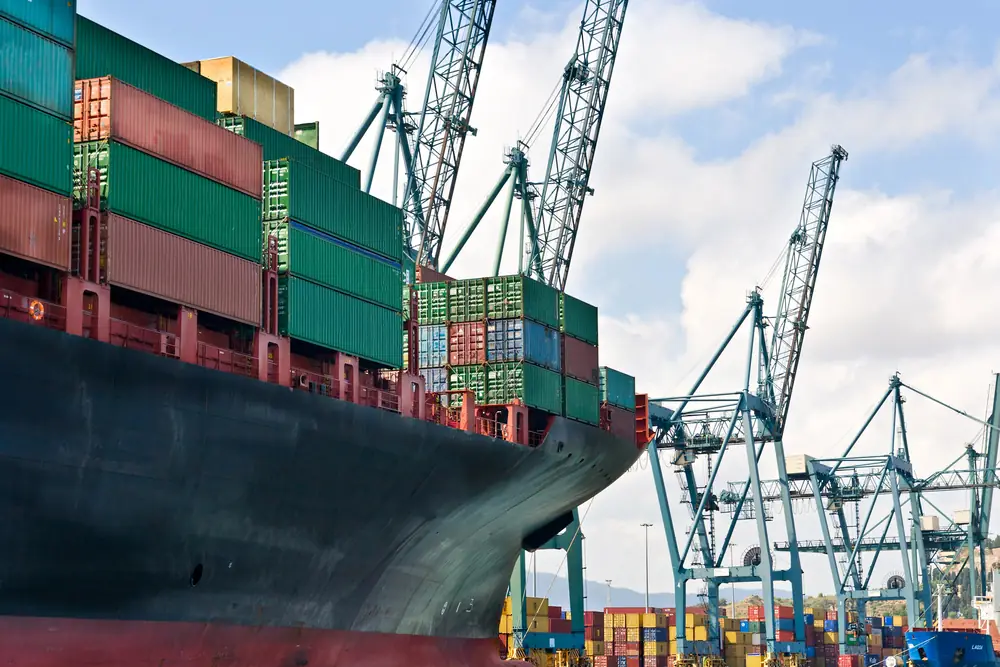Container shipping is the backbone of global trade, with billions of tons of goods transported across the world’s oceans every year. At the heart of this vast and complex network are port operations, the intricate processes that occur when a ship arrives at or departs from a port. While often overlooked by the average consumer, the efficiency of port operations plays a critical role in determining the overall effectiveness of container shipping. In this blog, we’ll explore how port operations impact container shipping efficiency and why optimising these operations is crucial for the smooth functioning of global trade.
Turn Around Time
Turnaround time refers to the duration it takes for a vessel to complete the entire process of unloading, reloading, and preparing to leave the port. Efficient port operations can significantly reduce this time, allowing ships to spend less time docked and more time at sea. This not only improves the shipping line’s schedule adherence but also lowers costs, as time spent in port often incurs hefty fees.
Several factors influence turnaround time, including the availability and efficiency of port labor, the effectiveness of the port’s management and scheduling systems, and the technology used for loading and unloading cargo. Ports that employ automated systems and advanced logistics software typically have faster turnaround times, which directly boosts container shipping efficiency.
Berth Availability
A key factor affecting port operations is the availability of berths—designated areas where ships dock to load and unload cargo. Limited berth availability can lead to delays, as ships may have to wait for a spot to become available. This congestion can create a domino effect, causing delays throughout the supply chain.
Ports with well-planned and efficiently managed berthing systems can accommodate more vessels simultaneously, reducing waiting times and increasing overall shipping efficiency. Advanced scheduling software and real-time monitoring systems help ports manage berth assignments more effectively, ensuring a smoother flow of container traffic.
Infrastructure and Equipment
The physical infrastructure of a port, including cranes, storage facilities, and transport connections, plays a significant role in determining how quickly and efficiently containers can be handled. Modern ports that invest in state-of-the-art cranes and automated systems can process containers much faster than those relying on older, less efficient equipment.
Moreover, the layout of the port and the availability of sufficient storage space for containers awaiting transfer can impact how quickly cargo moves through the port. Ports that are well-connected to road, rail, and inland waterways can also expedite the movement of containers to and from the port, enhancing overall shipping efficiency.
Customs and Regulatory Procedures
Customs and regulatory procedures are necessary to ensure the safety and legality of goods entering or leaving a country. However, these procedures can sometimes cause delays, particularly in ports with inefficient or outdated systems. Streamlined customs processes, supported by modern technology such as blockchain and electronic data interchange (EDI), can speed up the clearance of goods, reducing bottlenecks and improving the flow of containers through the port.
Efficient coordination between shipping lines, port authorities, and customs agencies is essential to minimise delays caused by regulatory checks. Ports that foster strong collaboration among these stakeholders tend to experience fewer delays, enhancing the overall efficiency of container shipping.
Labor Management
Human labor remains a critical component of port operations, despite the increasing automation of many processes. Efficient labor management ensures that there are enough workers available to handle cargo operations without causing delays. Ports that invest in workforce training and development, as well as in technologies that improve labor productivity, can process containers more quickly and with fewer errors.
However, labor disputes or shortages can severely disrupt port operations, leading to delays in shipping schedules. Maintaining good labor relations and ensuring a steady supply of skilled workers is therefore crucial for maintaining the efficiency of port operations.
Technological Integration
The integration of modern technology into port operations is perhaps the most significant factor influencing container shipping efficiency today. Ports that leverage technologies like the Internet of Things (IoT), artificial intelligence (AI), and big data analytics can monitor and optimise their operations in real-time. For example, AI-driven predictive maintenance can reduce equipment downtime, while IoT-enabled tracking systems can provide real-time visibility of container movements, allowing for better planning and coordination.
Moreover, digital platforms that facilitate information sharing among port stakeholders—such as shipping lines, terminal operators, and logistics providers—can further enhance efficiency by reducing the likelihood of miscommunication and ensuring that everyone is working with the same data.
Environmental and Sustainability Practices
As the world becomes more conscious of environmental issues, ports are increasingly adopting sustainable practices that can also impact shipping efficiency. Initiatives like shore power (allowing ships to plug into the electrical grid while docked), green port certifications, and the use of alternative fuels can reduce a port’s environmental footprint. However, these practices can also introduce new operational complexities that require careful management to avoid delays.
Sustainable practices often require upfront investment in infrastructure and technology, but they can lead to long-term efficiency gains by reducing energy costs, improving the health and safety of workers, and enhancing the port’s reputation.
Conclusion
As the world becomes more conscious of environmental issues, ports are increasingly adopting sustainable practices that can also impact shipping efficiency. Initiatives like shore power (allowing ships to plug into the electrical grid while docked), green port certifications, and the use of alternative fuels can reduce a port’s environmental footprint. However, these practices can also introduce new operational complexities that require careful management to avoid delays.
Sustainable practices often require upfront investment in infrastructure and technology, but they can lead to long-term efficiency gains by reducing energy costs, improving the health and safety of workers, and enhancing the port’s reputation.

